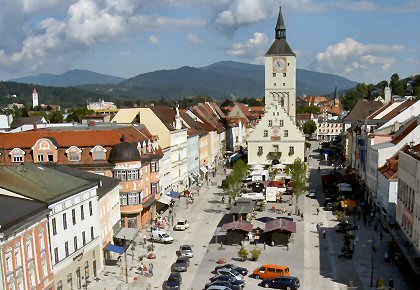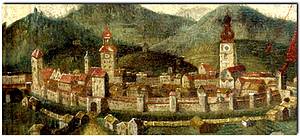The Danube cycle path leads past the edge of Deggendorf. It would be a pity not to go to the centre of the village.
The town has been built at a geographically important place. Here there was a natural Danube crossing, which continued the road along the Isar to the north. For the ruling families in Bavaria this was always a reason to be present here. With the extinction of the Babenbergs and the Counts of Bogen (1242), the Wittelsbachs took possession of the former county of Deggendorf. The town was reorganized and planned. Deggendorf was promoted with privileges and privileges until it was granted a town charter in 1316 and 1320. Thus Deggendorf had become a centre of attraction for market and trade for the surrounding area. Around 1330 the Jewish community of Deggendorf was destroyed in a pogrom. The Jews were accused of desecration of hosts. But it was rather about getting rid of heavy debts. The 'desecrated' hosts were found in a well and put into the church. This was the reason for the pilgrimage to the burial church, the so-called "Deggendorf Grace", which took place until 1992.

The Thirty Years' War resulted in heavy population losses. Two thirds of the inhabitants died of the plague in 1633/34. During the War of the Spanish and Austrian Succession parts of the city were set on fire and destroyed. Although these events left their mark for decades, Deggendorf quickly re-established itself as a functioning town with the help of the resources of the surrounding area. A baroque sign of this resulting urban self-confidence was set with the construction of the Burbkirchenturm in 1722, which art historians describe as one of the most beautiful towers in Bavaria and which gives the town square its unmistakable character.

In the 19th century the more than 500 year old town centre was changed. Today, only the layout of the town is still visible, and a 27-metre-long section of the town wall has been preserved.
Old town hall on the town square (Luitpoldplatz)
Fountain of Mary (Marienbrunnen) in Deggendorf


Danube Cycle Route

